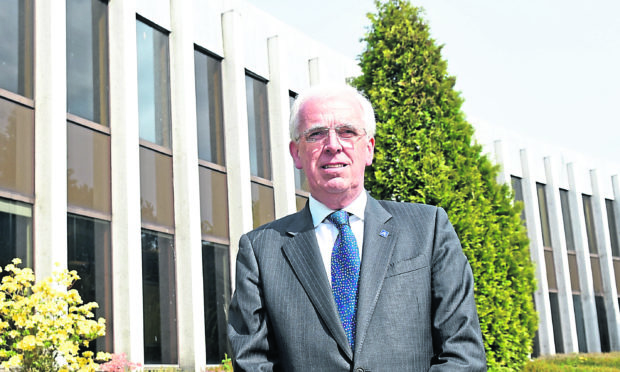Finance chiefs have unveiled plans to help ensure Aberdeenshire Council can still carry out its essential duties despite facing a predicted £30 million budget gap due to the pandemic.
The new document aims to guide the authority in overcoming challenges brought about by funding constraints, Brexit uncertainty, climate change and other factors including coronavirus over the next two years.
To help the council balance its books and keep its vital services alive, local authority bosses will focus on the three “pillars” of “people, environment and economy”.
Those respectively cover issues like education and health and wellbeing, infrastructure and finding ways of helping to boost the region’s coffers.
In a report which will be considered next week, councillors have been told the authority had £13.1m less than it should have in September due to lost income, unexpected costs and undeliverable savings caused by the pandemic.
The report highlights fears this could “result in a gap of up to £30m for this year”.
In a foreword, council leader Jim Gifford said: “In a rapidly changing social and economic landscape, the council has and will continue to work hard to mitigate the impacts of the pandemic on our communities and businesses alike.
“In order to do this, we must draw a sharper focus on those services which are most essential to our residents, our local economy, and our environment so that we can continue to prioritise service delivery and associated resources to the areas that are most in need.”
He added: “While it is accepted that the shape of local services will continue to change at a faster pace than anything we are used to, the new Council Plan 2020 to 2022 provides clear strategic direction for our local communities, at a time of universal uncertainty.”
Democratic Independent and Green Group councillor Martin Ford last night questioned a perceived lack of detail.
He said: “Covid-19 has changed Aberdeenshire and the world.
“So it does make sense to revisit and revise the council’s priorities.
“A proper, evidence-based consideration of what is different and thus what needs to be amended would provide a rational basis for a new plan.
“However, that considered analysis certainly hasn’t been done.
“Instead, we have a short document with the hallmarks of design by committee.
“Truly a camel in terms of the well-known metaphor.
“Whilst officers have done what they could in drafting the plan, a coherent document was made impossible by the council decision in July — to group six new priorities according to the three pillars of ‘people’, ‘environment’ and ‘economy’, but choose six priorities that in no way correspond to the pillars to which they were allocated.
“Whilst it would be nice if the Council Plan was a logical and consistent document, actually the vast majority of what the council does is to provide public services, as required by law.
“The requirement to provide those services is always going to be by far the greatest influence on what the council does.”
Mr Gifford said all elected members were asked for their input and ideas in coming up with the document, and “the majority of councillors have done that”.
